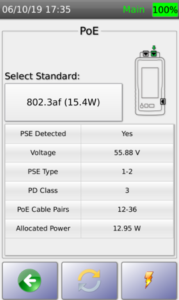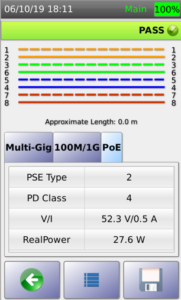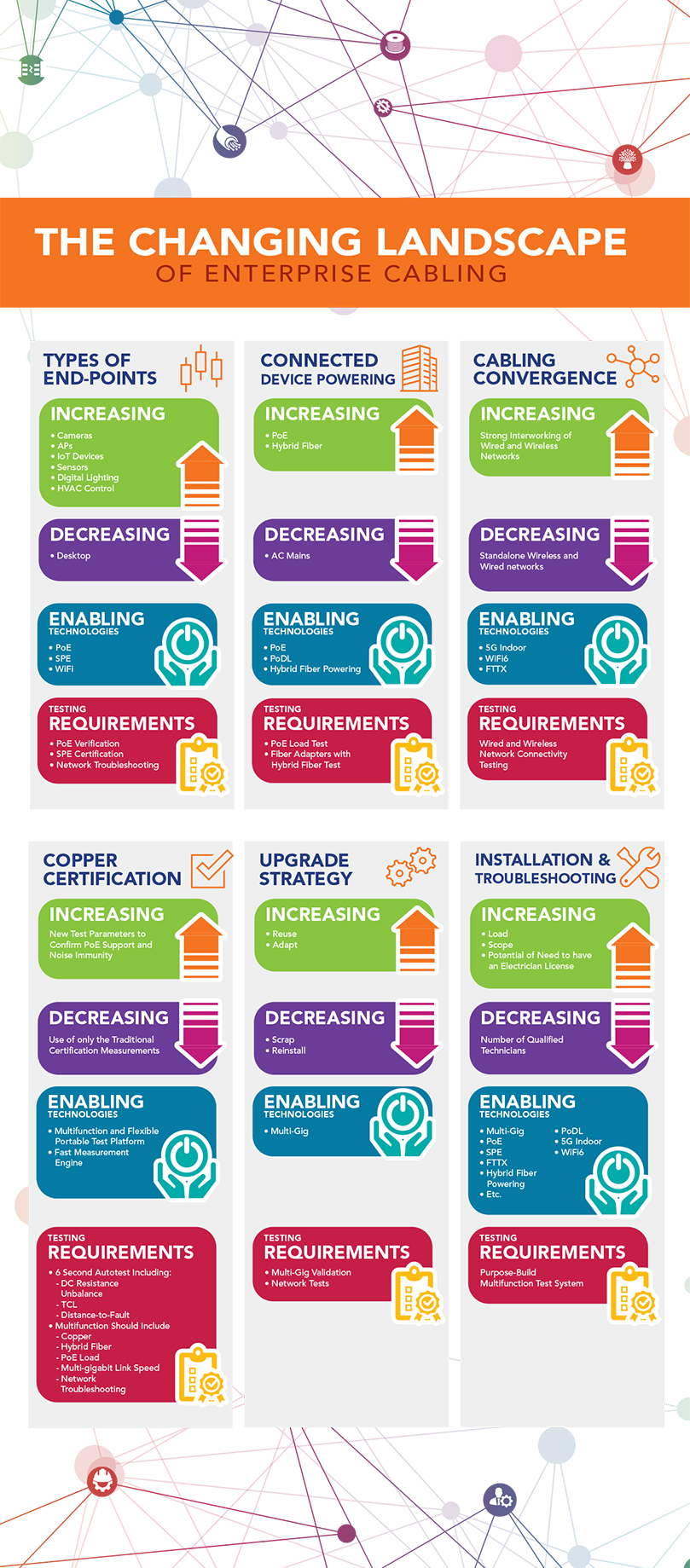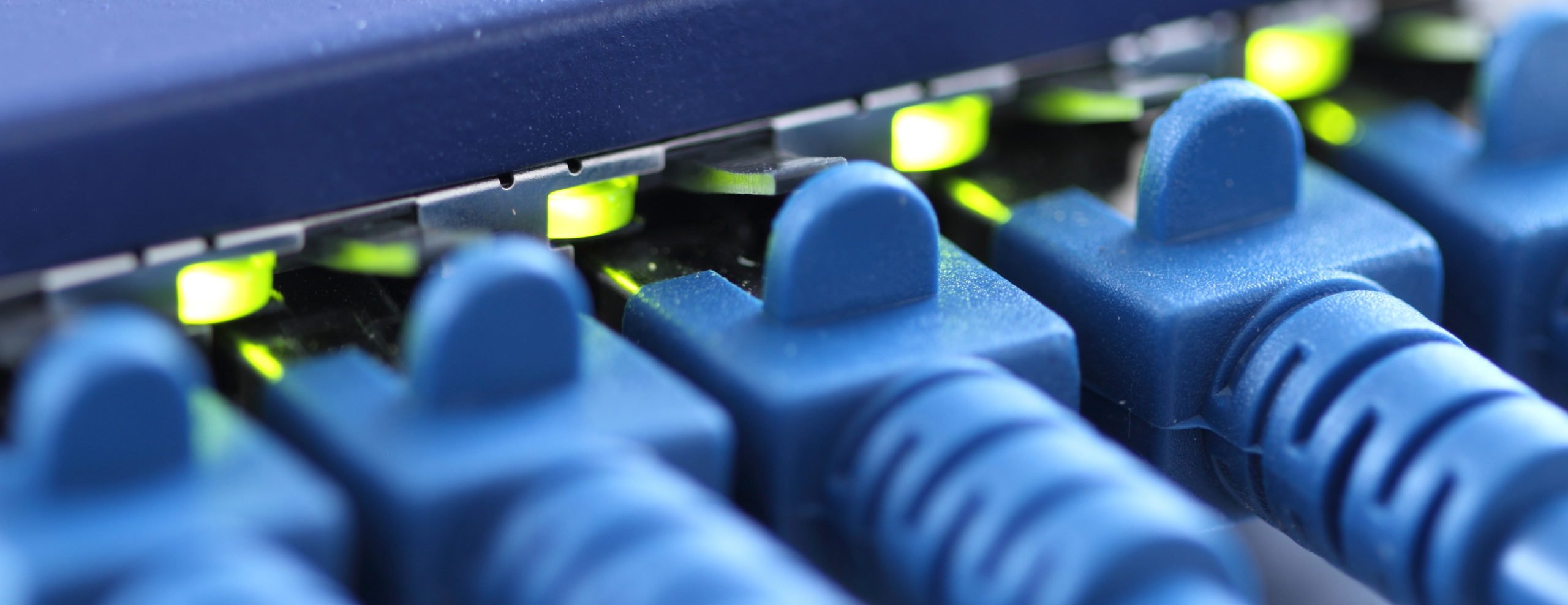Comparing Copper Cable Certification Standards
Field testing of network cables is an important step in ensuring good quality of installation....

Looking at the challenges of a typical Internet of Things (IoT) rollout, the biggest hurdle usually isn’t how to connect IoT devices to the LAN. Instead getting power cheaply to the device is often a far more difficult problem. Installing AC power outlets next to every IoT device is laborious and cost prohibitive. It’s also overkill considering the relatively low amount of voltage required by most IoT endpoints. Therefore, power over Ethernet (PoE) has become a must-have technology for virtually every enterprise and industrial IoT rollout. That said, PoE installations come with their own set of unique challenges. This means you must possess a certain level of knowledge when it comes to understanding what you need from a power perspective. Let’s go over 4 things you should know to ensure a successful PoE install.
1. How does PoE Work?
According to the IEEE, power over Ethernet is comprised of three components: power sourcing equipment (PSE), the powered device (PD) and the cabling used to deliver power to the device.

Example PoE Test Results listing PSE Type and PD Class
Additionally, this cabling is dual purpose in the fact that it not only carries electricity to power the device – but is also used to also used for Ethernet data transport. There are several IEEE PoE standards that exist today. Each one delivers varying power levels from the PSE to the PD. These standards also provide the necessary signaling that both the PSE and PD will understand. The signaling is used to detect whether the PD indeed needs power as well as a negotiation process to determine the amount of power the PD requires for operation. Currently, there are eight different power classes available as defined by the IEEE. The power delivered by the PSE ranges from 4 Watts in a class 1 device to 90 Watts in a class 8 device. To learn more about the most popular IEEE PoE and PoDL standards, check out our detailed blog here.
It’s also important to know that a PSE can either be a combined Ethernet and PoE switch — or a midspan PoE source that separates the duties of Ethernet switching and PoE delivery. In either case, it’s necessary to know ahead of time which IEEE PoE standards the switch or midspan device can deliver to the PD. Some PD’s such as newer wireless access points or advanced 4K/8K and PTZ surveillance cameras require more power to operate. Thus, it’s essential that you verify the PSE can indeed deliver the appropriate amount of power each PD will need.
2. Choosing the right cabling
There are several Ethernet cable standards that PoE can operate across. Some cable types are better than others depending on the wattage your PD’s require. Within common office and manufacturing deployment environments, you’ll likely come across existing four-pair copper cabling using CAT5, CAT5e and CAT6 standards. PD’s requiring lower wattage can utilize this older cabling. However, it’s highly recommended that when powering devices that require 60 W or higher sent over the cabling, newer CAT6A and higher cabling should be run. These types of cables use thicker conductor diameters that helps reduce resistance. This is critical so that power is not lost due to compounding resistance over longer cable runs. CAT6A and higher cabling is also better insulated and can handle the added heat produced by the higher power loads being sent across the wires. This is especially important when running higher-wattage PoE in large cabling bundles. Lastly, thicker cables are far more capable at delivering higher power and faster Ethernet transmission speeds for multi-gigabit connections over twisted pair copper. Thus, running newer cabling future-proofs your IoT investment.
3. Certify all cabling to ensure it meets stringent standards
To increase the likelihood that your cabling won’t be an issue when running PoE, it’s necessary to certify cabling to meet the cable manufacturers strict standards. This is true not only in terms of ensuring that the cabling can operate at multi-gigabit speeds – but also to test and ensure proper power load capacity for IEEE 802.3af, 802.3at and 802.3bt standards.
4 . How the AEM TestPro can help
Any successful IT project deployment requires that the proper tools are in place to get the job done right the first time. When looking at copper cabling for both Ethernet transport and PoE, placing an AEM TestPro CV100 in your cable installers hand is the best way to your cable plant will work as intended. For one, the TestPro can fully certify new and existing cabling to meet the cable manufacturers warranty standards. Doing so ensures the cabling – and the install – were properly completed and is ready for production use. Tests not only verify that cabling can operate properly up to multi-gigabit speeds – but also that sustained PoE load validation tests have been performed up to 90 Watts per cable.

TestPro CV100 Multi-gig Test Results Also Showing PoE Capabilities
The TestPro will also be your best friend when it comes to troubleshooting cabling problems that will undoubtedly arise. Finding the root cause of a cable performance or PoE issue can be a real challenge without the proper test tool at the ready. With an industry best 6 second autotest, a TestPro can identify and locate common issues such as the locations of copper faults, propagation delay, and DC resistance unbalance. Thus, having a TestPro is both a certification and troubleshooting time and money saver in the long run.
A successful PoE Install starts with the cabling
If you plan to significantly expand your reliance on PoE, the first place to ensure success is to test your cabling. To be certain that both new and existing cable runs will meet your needs, thorough testing is an absolute must. The best way to be sure you won’t run into problems down the road is to use a copper certification test tool like the TestPro that can verify both data transport performance as well as power load testing. Only then can you be sure that your cabling is ready for a production environment.
Ready to learn more about how AEM's award-winning test solutions can help you achieve your cable testing needs? Request a demo with our team.

Field testing of network cables is an important step in ensuring good quality of installation....

Enterprise cabling systems are going through a big paradigm shift. In the past, one of the main...

Managing time on any cable install project can be a challenge. For large CAT6A installs, it can...
Leave a comment